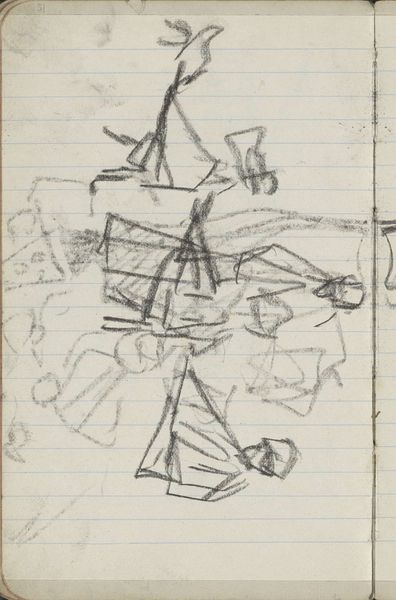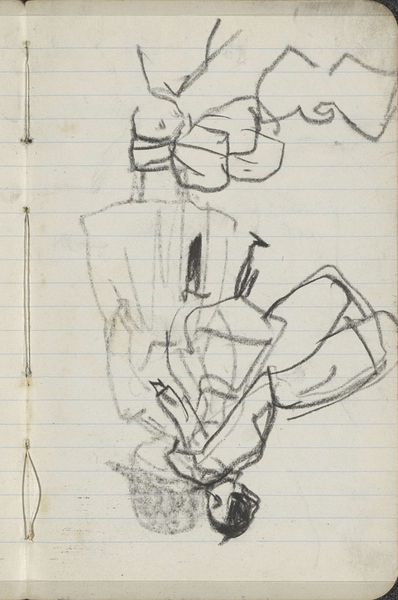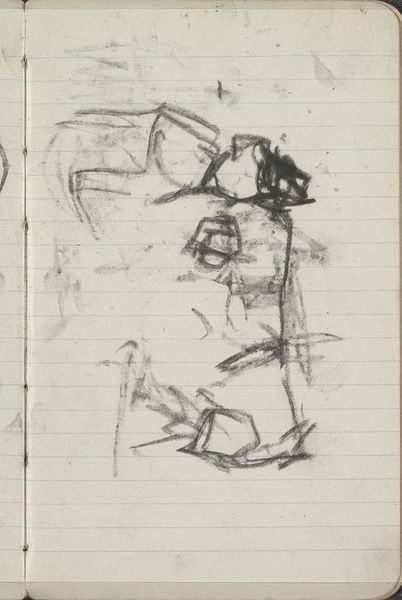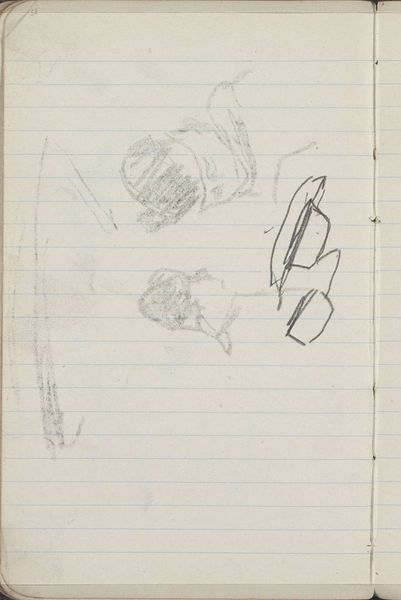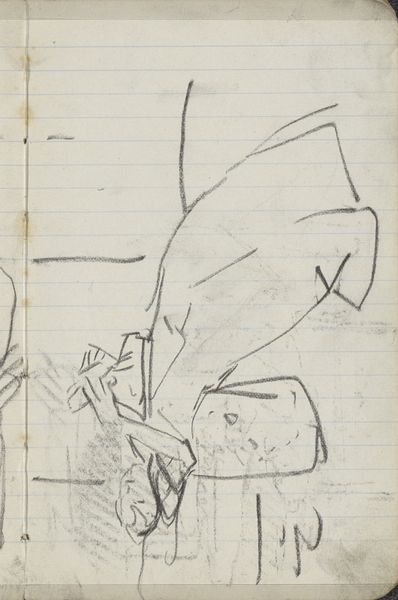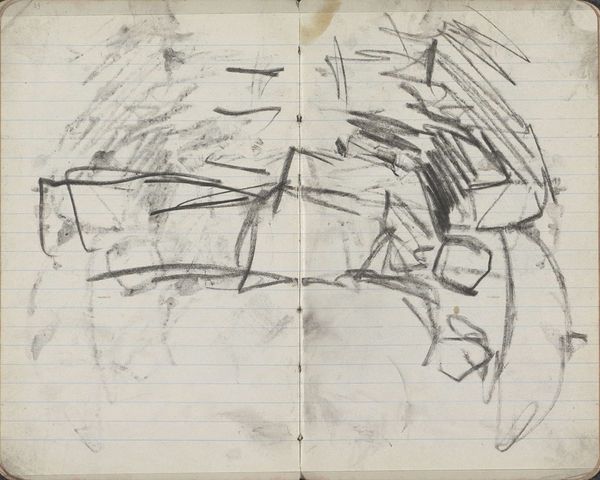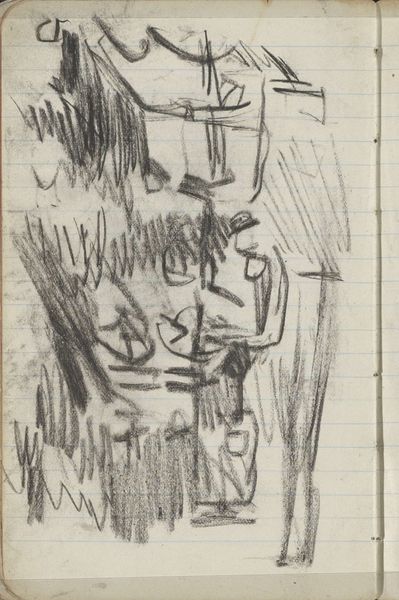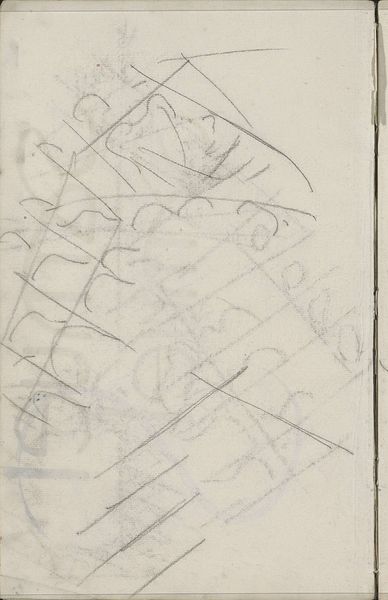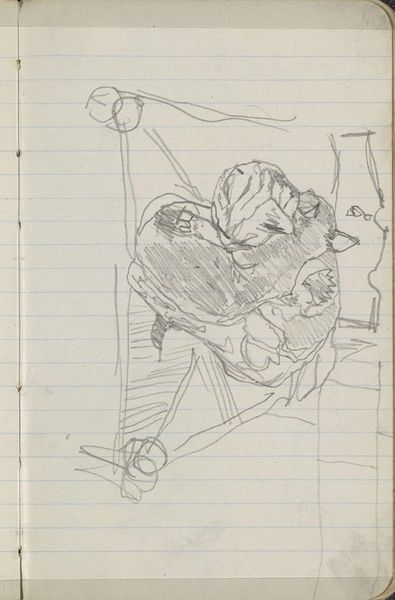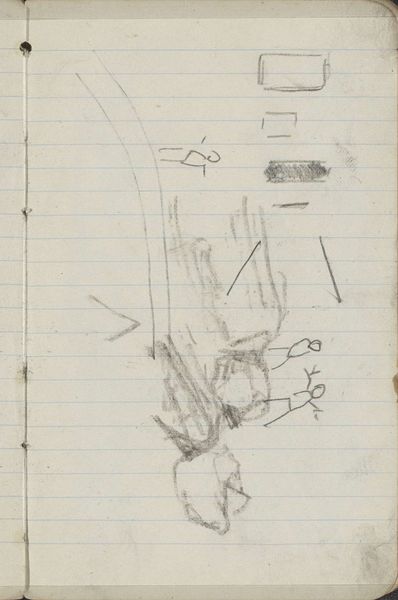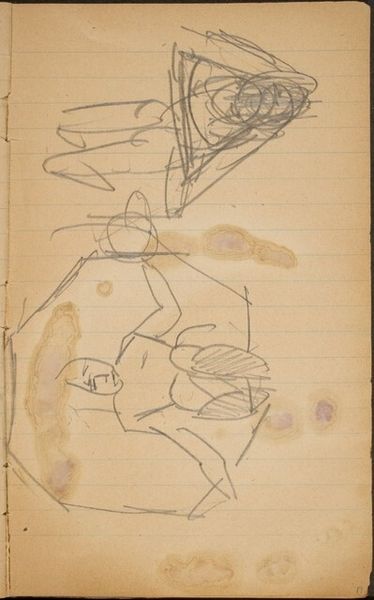
Copyright: Rijks Museum: Open Domain
Editor: Here we have "Figuren op Hartjesdag," by George Hendrik Breitner, sketched around 1894 to 1898. It’s graphite on paper and, from what I understand, housed here at the Rijksmuseum. There's something incredibly raw about it, like catching a glimpse of the artist's immediate thought process. What strikes you most about it? Curator: What interests me is the context of its creation. This isn't a finished artwork intended for the salon. It's a sketch, raw material documenting the everyday. The lined paper itself speaks volumes about the economic realities Breitner was working within. Was he reusing paper? What kind of access did he have to finer materials, and how did this impact his artistic choices? Editor: That's fascinating; I hadn't considered the paper itself as a key component. It’s so unassuming, really. Curator: Precisely! The choice of a common, functional material like lined paper pushes us to reconsider traditional boundaries between 'high art' and the more quotidian aspects of creative labor. How might we reassess the role of readily available, even disposable, materials in the creative process? And, turning it back on you, do you think its incompleteness shifts its value in your eyes? Editor: Absolutely! Thinking about it as a kind of material study, a record of the artist's process, suddenly makes it more compelling. It feels less precious and more accessible, oddly. It definitely highlights the labour behind even a fleeting image. Curator: Exactly. It prompts us to think about the making of art not as some ethereal act, but grounded in material conditions and available resources, shaping not only the image but how we value it. It reveals something vital about Breitner’s practice.
Comments
No comments
Be the first to comment and join the conversation on the ultimate creative platform.
